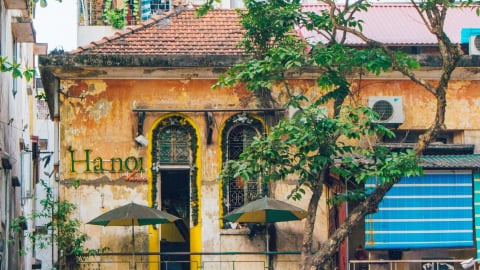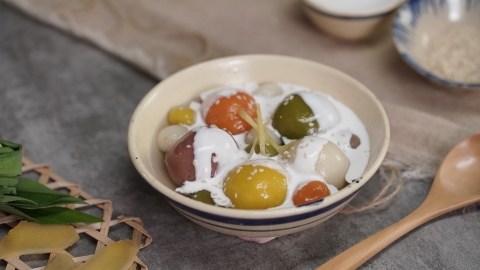Imagine having a wheel of cheese at your wedding. What would it be like if it was served at your funeral?
If they’re lucky, the cheese wheel residents of the Swiss village of Grimentz will resemble the one in Jean-Jacques Zufferey’s basement: dry and brown, streaked with decades of worm and rat bites, and hard as a rock.
You need an axe to cut it into slices, and a shot of brandy to wash it down. It’s the rare cheese you don’t want to eat when it’s perfectly ripe. A hard funeral cheese means its owner lived a long life.
Tradition is considered "evil"
Mr. Zufferey's home, located in Switzerland's Val d'Anniviers, is one of the last places you'll find this peculiar tradition: saving a wheel of cheese for your own funeral.
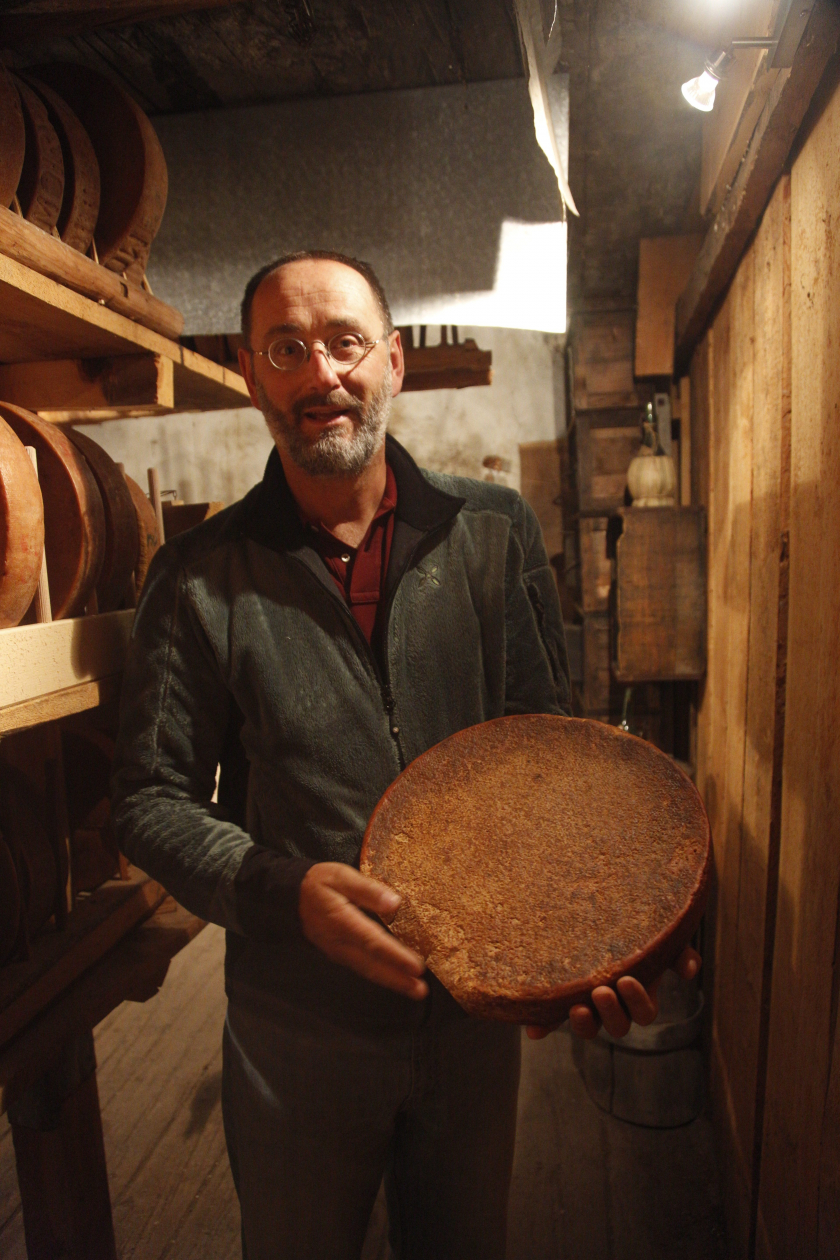
Jean-Jacques Zufferey holding a 149-year-old wheel of cheese
Val d'Anniviers, with the highest peaks of the Swiss Alps, is a classic example of how mountains have isolated valleys and villages, creating unique traditions. When anthropologist Yvonne Preiswerk first did fieldwork there, she found burial rites similar to those of ancient Egypt.
“We were surprised by this peculiar kind of mountain Catholicism,” she wrote in her 1992 study. In previous centuries, visitors to the area were astonished by the pagan traditions and called the locals “barbarians,” assuming they were descendants of the Huns.
The ritual that shocked them involved the combination of death and cheese. It might seem like an odd pairing, but the land offers an explanation.
Along the winding road through the valley to the small mountain village of Grimentz, isolated villages cling to the cliffs, in the shadow of ice-capped peaks. The land is steep and rocky. The growing season is short and the winters are long. To survive the cold, the villagers must find ways to preserve nutritious food.
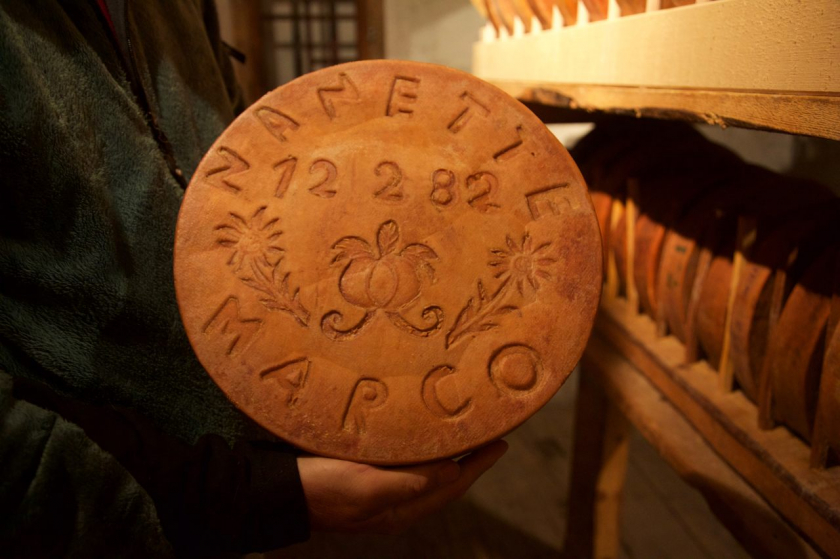
One of Zufferey's cheese-carved wheels
That is why the inhabitants of Grimentz, like other Alpine dwellers, breed dairy cows that can cope with the steep terrain, bringing them up to the high pastures in the summer to graze. From the abundant summer milk, they make giant wheels of cheese.
To make their cheeses firm, cheesemakers “cook” curds until they thicken, then press them to extract as much whey as possible. Moisture and heat cause spoilage, hastening the ripening process, as cheese ferments very slowly in the cold, dry mountain air. While fermentation takes years, most Alpine cheeses reach their peak—still soft and flavorful—a few months later, in the middle of winter, a time when food was once scarce. Sliced and eaten with bread or melted over an open fire, cheese is an important source of winter calories.
The cult of cheese took on different forms in the isolated valleys of the Alps. “A popular culture based on cows permeated every moment, object and event of the mountain people,” writes Preiswerk. In Grimentz, it manifested itself in elaborate funerals.

St Luc Village and Val d'Anniviers, Valais, Switzerland
After the owner dies, the cows’ bells are removed so they can mourn too. Relatives leave a “death picnic” next to the coffin, including a bottle of wine, bread and cheese. There are also thick boots, as the spirits are said to walk on the glacier after dark.
Such foods would also be present at the important meal of the funeral, which symbolized the community's restructuring after the loss. One interviewee in Preiswerk's research said that guests were told: "Come to the funeral, the dead left plenty."
Cheese served at their own funeral
In poorer areas, “leaving enough” required careful planning. “We had ‘cheese of the dead,’ everyone had a wheel of cheese to serve to everyone at their funeral,” Zufferey explains. Back then, the shriveled cheese was served with “vin des glaciers,” a local wine.
As the Valais region of the Alps modernized in the 1900s, villages moved away from subsistence farming, and the fear of not having cheese for funeral tables gradually disappeared.
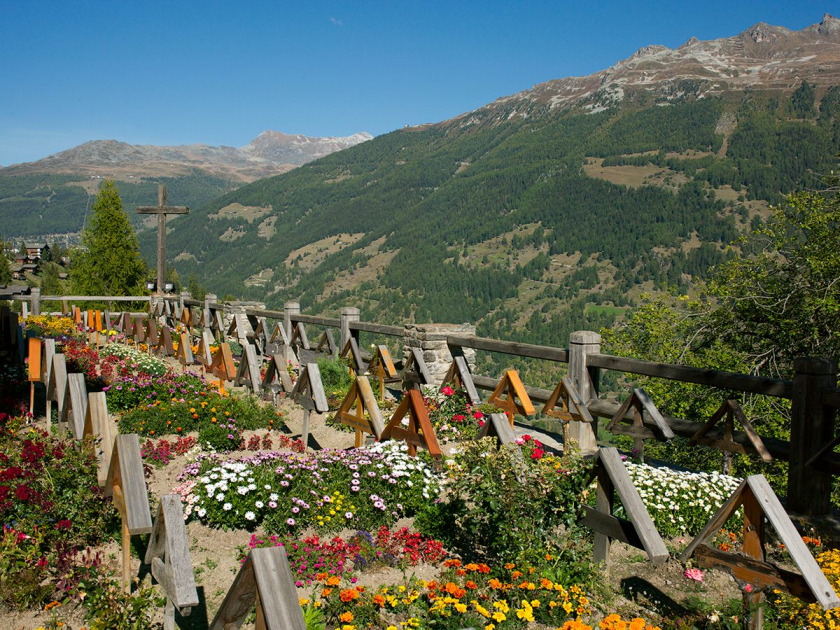
Cemetery in the village of Grimentz
According to anthropologist Claude-Alexandre Fournier, families no longer hold funeral ceremonies at home, and the knowledge of previous generations is no longer passed down. Yet in some cellars in the valley, you will still find carefully preserved funeral cheeses.
In Grimentz, Zufferey, a tall, gentle man who worked at the local agricultural department, opened the cellar door. His family had forgotten about the funeral cheese until his grandmother died in 1944. That's when Zufferey's father found two very old wheels of cheese in her cellar.
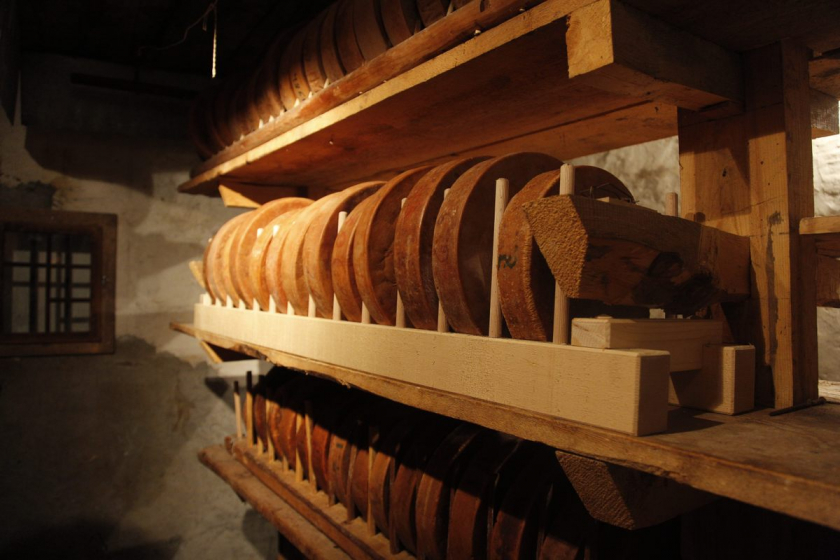
Old wheels are stacked on top of each other. Since they are completely solid, they will not lose their shape.
Instead of eating the cheeses, which were made in 1870 based on the engravings, his father decided to preserve them. Since then, the family has added new cheeses, creating a collection. Not for funerals, they are kept as evidence of a dying tradition.
Zufferey took a 149-year-old wheel off the shelf. Hard as a rock and tough as leather, with a shiny brown surface, it still had a little oil, but no moisture. The microorganisms and mold on it were long dead. He took another wheel, made in 1967, engraved with an edelweiss. A third, from 1992, had a “cow queen” on it.
He worries about what will happen to the collection in the long run. He wants to donate it to a museum, but can't find a nearby place with a similar climate. "There's no cheese museum in Valais," he says. "It's strange."
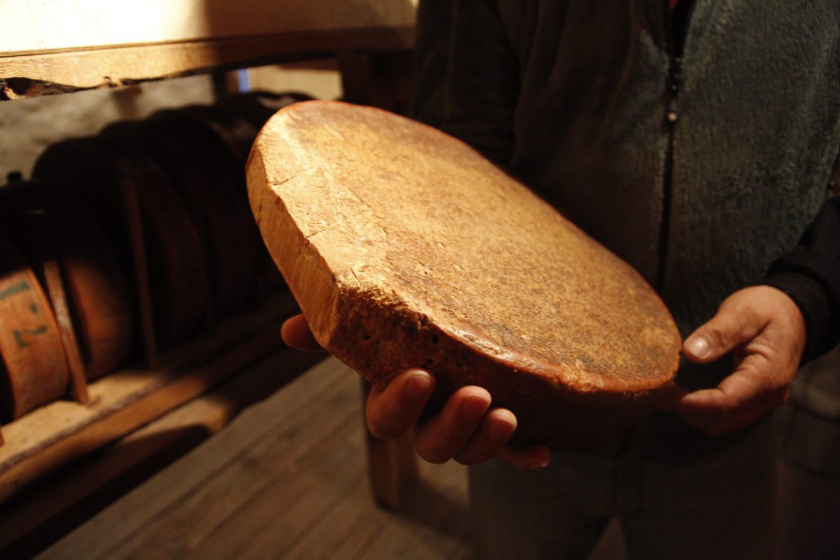
This cheese wheel would have been much larger 149 years ago, but has shrunk due to loss of moisture.
There was no rush, however. The cool cave cut into the mountainside beneath his family’s cabin seemed to have preserved the cheese well. Zufferey slowly placed it on a shelf, exited the tiny cellar, and locked the door. He left the darkness to envelop the uneaten wheels of the dead man’s cheese, where they awaited their fate.



























